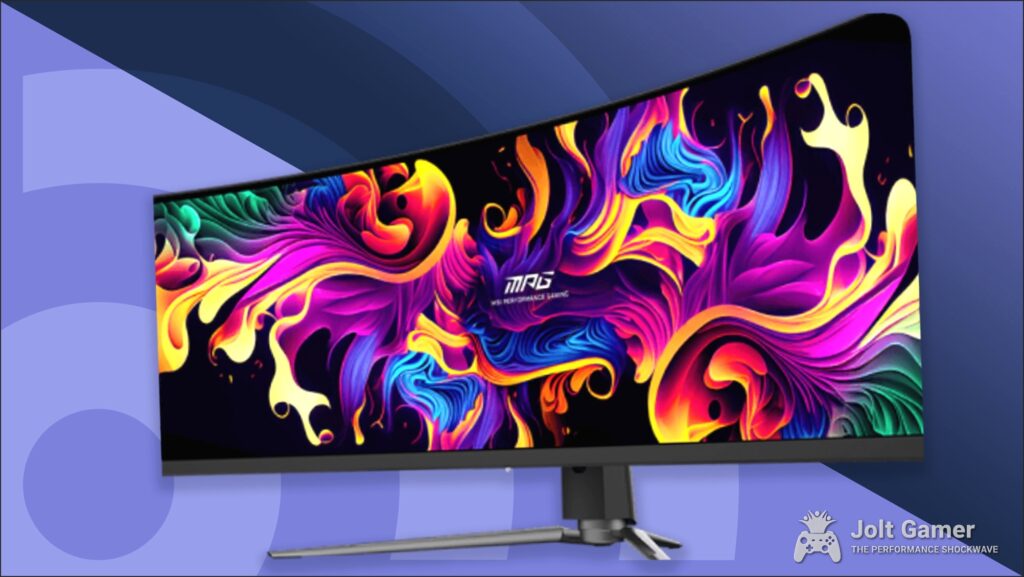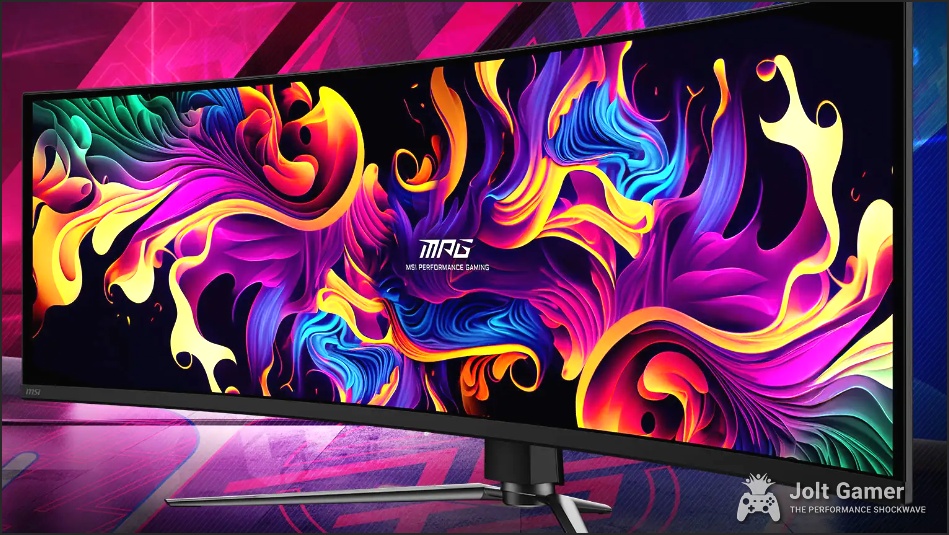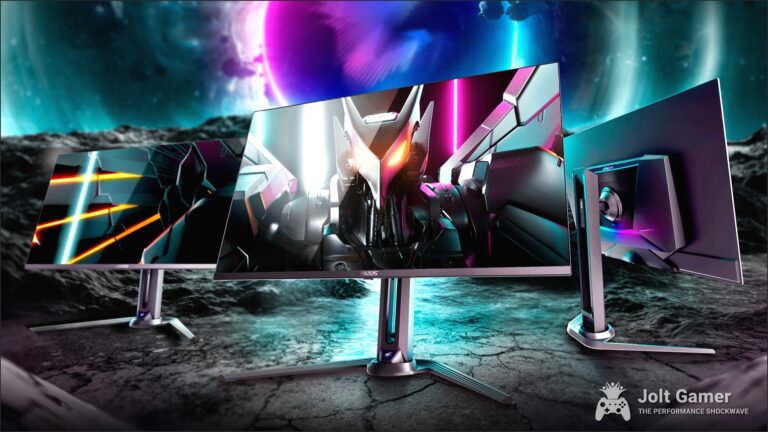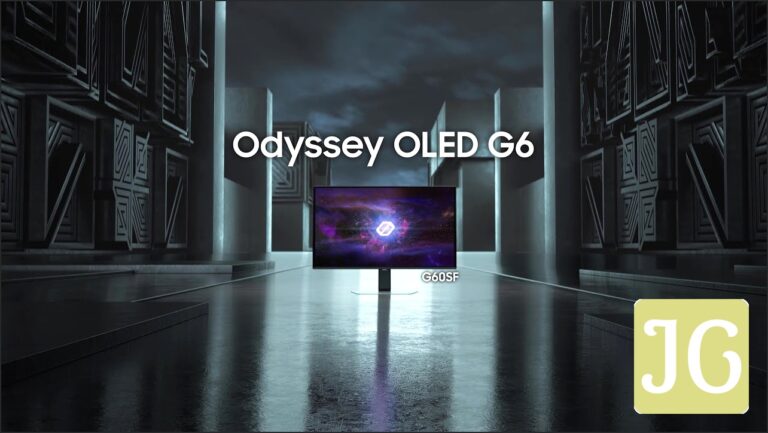Key Takeaways: Your OLED Burn-In Survival Guide
- MSI’s OLED Care 2.0/3.0 offers robust burn-in prevention, including pixel shift, panel protect, and static element detection, backed by a 3-year burn-in warranty.
- Long-term stress tests (e.g., Monitors Unboxed) show modern QD-OLEDs can develop burn-in after 4,000+ hours of static, workstation-like use, but this is far beyond typical gaming scenarios.
- User experiences are mixed; some report issues potentially linked to OLED Care/drivers, while others have flawless experiences, highlighting the need for proper setup and driver management.
- Proactive user habits (auto-hide taskbars, dynamic wallpapers, regular pixel refreshes) significantly extend OLED monitor lifespan.
- MSI’s QD-OLED monitors like the MPG 321URX offer competitive features and value, often undercutting rivals while providing comprehensive burn-in protection.
The OLED Burn-In Anxiety: Separating Myth from Reality
For years, the specter of ‘burn-in’ has haunted discussions around OLED displays, casting a shadow over their otherwise unparalleled visual fidelity. Gamers, in particular, worry about static UI elements like health bars, minimaps, or even the Windows taskbar permanently etching themselves into their expensive panels. MSI, a major player in the gaming monitor space, has stepped forward with its ‘OLED Care’ technology, promising to alleviate these fears. But does it truly work? And what does the latest intelligence, including rigorous long-term testing, tell us about the real-world longevity of these stunning displays?

Understanding OLED Burn-In: The Science & The Stakes
OLED (Organic Light-Emitting Diode) displays achieve their breathtaking contrast and perfect blacks by having each pixel emit its own light. Unlike LCDs, which use a backlight, OLED pixels can turn completely off, creating true black. However, this self-emissive nature also means that individual pixels can degrade at different rates if constantly displaying the same static image at high brightness. This differential degradation leads to ‘image retention’ or, in severe cases, ‘burn-in’ (permanent image retention). For gamers, this means potential ghosting of UI elements, a frustrating prospect for a premium display.
MSI’s OLED Care: A Comprehensive Suite for Longevity
MSI has invested heavily in its ‘OLED Care’ technology, now in versions 2.0 and 3.0, to combat burn-in. This suite isn’t a single feature but a collection of intelligent algorithms and hardware designs working in concert to extend the lifespan of their QD-OLED panels. These proactive measures are key to MSI’s confidence in offering a robust warranty.
Key Features of MSI OLED Care 2.0/3.0:
- Pixel Shift: Automatically shifts pixels subtly and imperceptibly to distribute wear evenly. MSI offers slow, normal, and fast modes (every 3, 2, or 1 minute respectively).
- Panel Protect (Pixel Refresh): A maintenance cycle that refreshes all pixels to restore uniformity. MSI has extended the timer from 16 to 24 hours of continuous use, preventing disruptions during long gaming sessions. Prompts users every 4 hours.
- Static Screen Detection: Identifies areas of static content and automatically reduces their brightness.
- Multi Logo Detection: Specifically targets and dims bright, static logos (e.g., channel logos, game UIs).
- Taskbar Detection: Automatically dims the Windows taskbar to prevent retention.
- Boundary Detection: Adjusts the brightness of window edges to prevent burn-in from static window frames.
- Passive Cooling Design: Utilizes custom heatsinks with graphene film for silent, efficient heat dissipation, crucial for OLED longevity.
MSI’s 3-Year Burn-In Warranty
Reinforcing confidence in their OLED Care technology, MSI provides a robust 3-year warranty that explicitly includes coverage for OLED burn-in. This is a significant commitment that sets a high standard in the market.
The Ultimate Burn-In Test: Monitors Unboxed’s 4,000+ Hour Stress Report
To truly understand OLED longevity, we must look beyond manufacturer claims to independent, long-term testing. Tim Schiesser of Monitors Unboxed has been conducting a rigorous, intentional stress test on an MSI MPG 321URX QD-OLED monitor for nearly two years, accumulating over 4,000 hours of use under demanding, workstation-like conditions. This isn’t typical gaming; the monitor is used for approximately 8 hours daily with predominantly static desktop windows, calibrated to 200 nits, and configured to turn off only after two hours of inactivity—a setup designed to push the panel to its limits.
After approximately 4,500 hours of use over 18 months, the MSI OLED MPG 321URX in the stress test is now exhibiting noticeable visual artifacts and burn-in effects that subtly impact the day-to-day viewing experience. A central burn-in line, initially mistaken for video corruption, has become visible even in game footage, confirming its origin from the monitor itself and technically reaching a point where it affects Schiesser’s viewing. Other burn-in effects, including taskbar burn, are also becoming more prevalent and apparent, especially when viewed with a digital enhancement filter, though not yet visible during normal daily use.
Tim Schiesser, Monitors Unboxed
Monitors Unboxed’s findings confirm that even modern QD-OLED displays, under extreme and static workloads, will eventually develop visible burn-in effects. However, it’s crucial to contextualize this: 4,000+ hours of static content is an exceptionally long period, far exceeding typical gaming or mixed-use scenarios. Most gamers will likely upgrade their monitor before reaching such extreme conditions. This test highlights the inherent limitations of OLED technology but also demonstrates how far burn-in protection has come.
MSI’s QD-OLED Monitor Lineup: Specs & Features
MSI offers a diverse range of QD-OLED monitors, each tailored to different needs and budgets, all benefiting from their OLED Care technology. Here’s a look at some of the key models and their specifications:
Key MSI QD-OLED Gaming Monitor Specifications
| Item | MPG 321URX | MAG 321UPX | MEG 321URX | MPG 271QRX | MPG 321CURX |
|---|---|---|---|---|---|
| Panel Type | Samsung Gen 3 QD-OLED | Samsung Gen 3 QD-OLED | Samsung Gen 3 QD-OLED | QD-OLED | Samsung Gen 3 QD-OLED |
| Resolution | 3840×2160 (4K UHD) | 3840×2160 (4K UHD) | 3840×2160 (4K UHD) | 2560×1440 (2K) | 3840×2160 (4K UHD) |
| Refresh Rate | 240Hz | 240Hz | 240Hz | 360Hz | 240Hz |
| Response Time (GtG) | 0.03ms | 0.03ms | 0.03ms | 0.03ms | 0.03ms |
| Peak HDR Brightness | 1000 nits (3% APL) | 1000 nits (3% APL) | 1000 nits (3% APL) | 1040 nits (2% window) | 1000 nits (3% APL) |
| USB-C PD | 90W | 15W | 98W | 90W | 98W |
| KVM Switch | Yes | No | Yes | Yes | Yes |
| User-Updatable Firmware | Yes | No | Yes | Yes | Yes |
| Curvature | Flat | Flat | Flat | Flat | 1700R |
| Approx. US Price | $949.99 | $899.99 | $1,699.99 (unofficial) | $799.99 | 1,399EUR (Gamescom launch) |
MSI MPG 321URX QD-OLED
Price: $949.99
Availability: Available on Amazon US/UK
Where to Buy: Amazon, Newegg, Best Buy
MSI vs. The Competition: How OLED Care Stacks Up
MSI’s QD-OLED monitors operate in a highly competitive market, facing off against formidable rivals from Dell (Alienware), ASUS, Samsung, and LG. While all premium OLEDs now include some form of burn-in mitigation, the implementation, warranty, and overall feature set can vary significantly. Let’s compare MSI’s flagship 32-inch 4K QD-OLED with its closest competitors.
32-inch 4K 240Hz QD-OLED Monitor Showdown
| Feature | MSI MPG 321URX | Alienware AW3225QF | ASUS ROG Swift OLED PG32UCDM |
|---|---|---|---|
| Panel Type | Samsung Gen 3 QD-OLED | Samsung Gen 3 QD-OLED | Samsung Gen 3 QD-OLED |
| Price (US) | $949.99 | $1,199.99 | $1,299.00 |
| Curvature | Flat | 1700R Curved | Flat |
| Burn-In Warranty | 3-Year (Explicit) | 3-Year (Premium Panel Exchange) | 3-Year (ASUS QD-OLED Care) |
| USB-C Power Delivery | 90W | 15W | 90W |
| KVM Switch | Yes | No | Yes |
| Dolby Vision Support | No | Yes (Native) | Planned (Firmware Update) |
| Cooling | Fanless (Heatsink/Graphene) | Active Fan | Custom Heatsink |
Beyond raw specifications, user experiences reveal significant variability. Reports of gamma and color accuracy issues, VRR flicker discrepancies, and washed-out HDR (particularly with RTX 40 series GPUs) have surfaced across different brands and even between units of the same model. While MSI’s offerings generally stand strong, these anecdotes underscore the importance of proper calibration, driver management, and unit-to-unit consistency in the cutting-edge OLED market. The Alienware’s subtle curve offers immersion, while MSI and ASUS often opt for flat panels, appealing to different preferences.
JoltGamer’s Practical Advice: Maximizing Your OLED Monitor’s Lifespan
While MSI’s OLED Care technology and robust warranties offer significant peace of mind, proactive user habits remain the best defense against burn-in. Here’s how you can maximize the longevity of your QD-OLED gaming monitor:
Essential Tips for OLED Longevity:
- Enable OLED Care Features: Ensure MSI’s Pixel Shift, Static Screen Detection, Taskbar Detection, and Multi Logo Detection are enabled in your monitor’s OSD.
- Utilize Auto-Hide Taskbar: Set your Windows taskbar to auto-hide to prevent it from being a constant static element.
- Dynamic Wallpapers & Screensavers: Use animated wallpapers or screensavers that frequently change to avoid static desktop images.
- Vary Your Workload: If using your OLED for productivity, try to vary window positions and minimize prolonged display of static elements. Use dark mode where possible.
- Allow Panel Protect/Pixel Refresh Cycles: Don’t interrupt the automated pixel refresh cycles. MSI’s extended 24-hour timer makes this less intrusive.
- Power Off When Not In Use: While OLED Care works in standby, fully powering off your monitor during extended breaks can reduce cumulative static exposure.
- Understand Your Warranty: Familiarize yourself with MSI’s 3-year burn-in warranty details, including how to initiate a claim if needed.
Pro-Tip: Don’t Fear the Refresh!
While pixel refresh cycles temporarily make your monitor unusable, they are vital for maintaining panel uniformity and preventing burn-in. MSI’s 24-hour cycle is designed to be less disruptive than competitors, so let it do its job!
The Fandom Pulse: Community Reactions & Real-World Experiences
The gaming community’s sentiment around MSI’s OLED monitors and OLED Care is a mixed bag, reflecting the cutting-edge nature of the technology. While many users laud the stunning visuals and report flawless experiences, a vocal minority expresses frustration and confusion over technical issues that they sometimes link to OLED Care or display drivers.
MSI MPG321URX – at my wit’s end with the black screens/grey screens and amber LED due to MSI OLED care? ATI 6800XT video driver?
r/OLED_Gaming User
Try a Nvidia Card First.. i use a msi321UPX and its flawless
r/OLED_Gaming User
This emotional conflict underscores the challenge of diagnosing issues with complex new tech. Are ‘black screens’ and ‘amber LEDs’ truly a flaw in MSI’s OLED Care, or are they symptoms of driver incompatibilities, specific system configurations, or other hardware conflicts? The lack of widespread, consistent reports suggests that while the technology is robust, careful setup and troubleshooting are sometimes required. MSI’s commitment to firmware updates (for MPG/MEG models) is crucial here, as demonstrated by previous fixes for issues like requiring a power button press after a cleaning cycle.
The Future of OLED: What’s Next for Burn-In Prevention?
The display market is dynamic, with OLED technology rapidly evolving. Newer generations of QD-OLED panels continue to improve text clarity, brightness, and inherent resistance to burn-in. Manufacturers are also continually refining their pixel refresh algorithms and adding more intelligent detection features. The increasing adoption of OLED in premium devices, from gaming monitors to upcoming MacBook Pros, signals a growing confidence in its longevity. While burn-in remains a theoretical possibility under extreme conditions, the industry is moving towards a future where it becomes an increasingly rare concern for the average user.
JoltGamer’s Final Verdict: MSI’s OLED Care Delivers Peace of Mind
After a comprehensive analysis of MSI’s OLED Care technology, long-term stress tests, and market comparisons, JoltGamer concludes that MSI has delivered a highly effective solution for mitigating OLED burn-in. While no display technology is entirely immune to extreme abuse, MSI’s combination of advanced software algorithms, passive cooling, and an industry-leading 3-year burn-in warranty provides significant peace of mind for gamers. The Monitors Unboxed test, while showing burn-in after 4,000+ hours of static use, represents an edge case far beyond typical gaming. For the vast majority of users, MSI’s QD-OLED monitors, coupled with sensible usage habits, offer an unparalleled visual experience without the constant anxiety of burn-in. They represent a strong value proposition in the premium gaming monitor segment, especially models like the MPG 321URX, making them a top recommendation for those seeking vibrant colors, deep blacks, and blazing-fast performance.
Frequently Asked Questions About OLED Burn-In & MSI OLED Care
Does MSI’s 3-year warranty cover burn-in?
Yes, MSI explicitly states that its 3-year warranty for QD-OLED monitors includes coverage for burn-in, offering significant reassurance to users.
How often should I run a pixel refresh (Panel Protect)?
MSI’s OLED Care 2.0/3.0 extends the automatic panel refresh timer to 24 hours of continuous use, prompting you after 4 hours. It’s best to allow these cycles to complete to maintain panel health. You can also manually trigger it if desired.
Can I prevent burn-in with software settings?
Yes, in addition to MSI’s built-in OLED Care, you can use Windows settings like auto-hide taskbar, dynamic wallpapers, and screensavers to minimize static elements. Using dark mode in applications also helps.
Is OLED burn-in still a major concern for gaming?
For typical gaming and mixed-use scenarios, modern QD-OLED monitors with robust burn-in protection (like MSI’s OLED Care) make permanent burn-in a much lower risk than often perceived. Extreme, prolonged static content at high brightness is the primary risk factor.
What is the difference between MSI MPG and MAG QD-OLED monitors?
MSI’s MPG series typically offers more premium features like higher USB-C Power Delivery, KVM switches, and user-updatable firmware. MAG models are often slightly more budget-friendly, with some feature reductions (e.g., lower USB-C PD, no KVM, no user-updatable firmware on some models).
Sources:
- Monitors Unboxed (YouTube Channel)
- TechRadar (Isaiah Williams’ work)
- TFTCentral.co.uk
- Digital Foundry
- Rtings.com
- PCM2 (User Reviews)
- r/OLED_Gaming (Reddit Community)





